The Lord of the Rings: The Rings of Power is a Fascinating Case Study in the Challenges of Adaptation
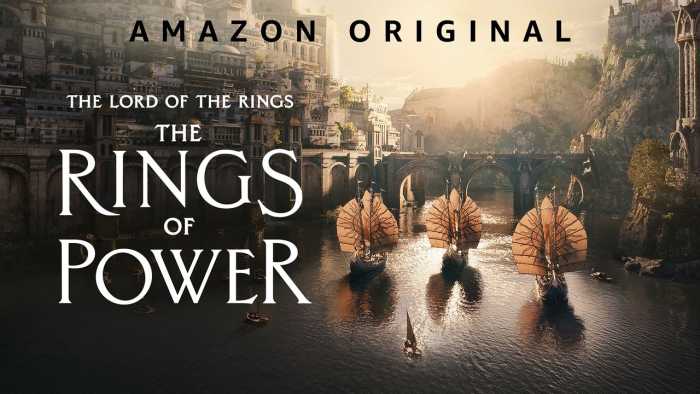
When Amazon announced that they had acquired the rights for The Lord of the Rings and its Appendices from the Tolkien Estate in November 2017, the announcement sent a shockwave across the entire entertainment landscape. The tech giant, known more for its two-day shipping than its streaming service, reportedly paid over $250 million for the rights to these key Tolkien texts. The amount of money Amazon is betting on Middle-earth balloons even further when you consider the massive costs connected to the development and production of their new The Lord of the Rings show. With an estimated production budget between $100-150 million for its first season, The Lord of the Rings: The Rings of Power is already one of the most expensive shows ever produced.
Rings of Power has proven to be among the most fascinating adaptations in recent media history. Set in one of the most beloved worlds in literature, but not based directly on the three core texts (The Hobbit, The Lord of the Rings, and The Silmarillion), the show faced a unique set of challenges throughout the course of its development, production, promotion, and release of its first season. Overall, Rings of Power serves as a fascinating case study that illustrates both the obstacles to and the joys of adapting revered subject matter for a new medium.
Part I: The Challenges and Pitfalls of Adapting Tolkien
An Early Sour Note From Individuals Criticizing Amazon Studio’s Diverse Casting
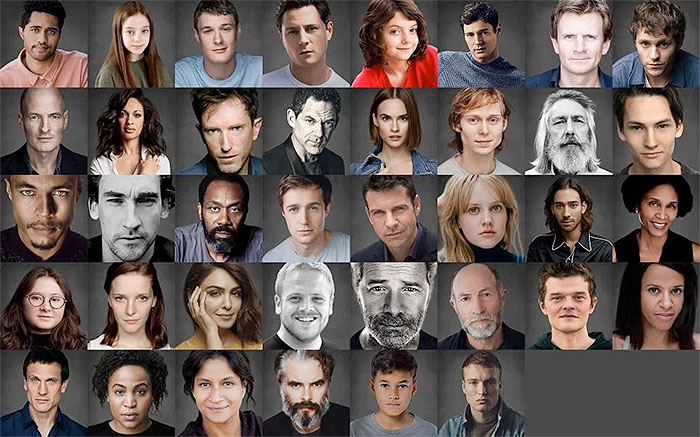
While many adaptations of famous works face scrutiny during the casting phase, the discourse surrounding Rings of Power proved to be some of the most hostile in recent history. When the diverse cast of Rings of Power was initially announced, some fans and media outlets were critical of the casting of non-white actors and actresses as elves, hobbits, and the other races of Middle-earth. Some of these early criticism and harassment of the Rings of Power cast were disappointing and ill-formed critiques, particularly because they were based primarily on the physical appearances of the actors, and not their skills as performers. Other comments directed toward the cast were clear examples of hate speech and bigotry. Ismael Cruz Córdova, who plays the elf Arondir (a new character created for the show), detailed the “pure and vicious hate speech” that he received through his various social media accounts in the aftermath of his casting. This initial controversy served as a bitter global entertainment story, one that highlighted some of the issues with adapting texts that can evoke strong, even irrational emotional responses.
Much of these online criticisms failed to consider the idea that the discourse around diversity and culture that Rings of Power was engaging with are extremely different than when Tolkien was developing his texts decades ago. Changes in the way people of color and female characters are part of the show were inevitable. In the article “‘The Rings of Power’: Every Adaptation is Re-interpretation so Ignore the Haters”, Anna Smol asserts that one of the values of adaptations are that they can “imitate, question, rewrite or interpret source material in various ways” (including representation). Smol also notes that each adaptation is its own product, and each adaptation is an opportunity to “update outdated and unacceptable tropes” that might be present in source material. Rings of Power‘s commitment to a diverse cast should have been seen as a positive development rather than a point of criticism for the show. The controversy surrounding race and casting created a dark cloud that lingered over the show’s production and promotion.
Lore Changes and Lore Compression Were Necessary
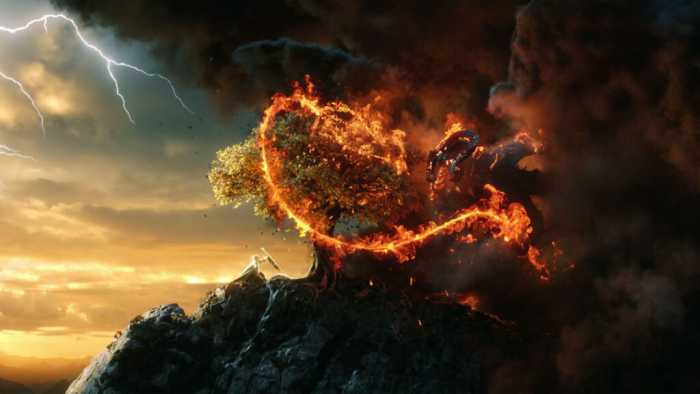
One of the major criticisms of Rings of Power from many Tolkien enthusiasts was the compression of and changes made to the lore of the Second Age. The complexity of Tolkien’s lore has proven to be one of the biggest challenges for Amazon Studios, and it is an area where many fans have valid complaints about the approach taken by the showrunners J. D. Payne and Patrick McKey. In the process of creating the first season of Rings of Power, events that take place over hundreds or thousands of years in the Appendices were heavily compressed to take place over weeks or months. For example, key figures like Elendil and Isildur are born more than one thousand years after the forging of the One Ring, yet in the show, these characters are alive prior to the forging of the three Elven rings. Given the drastic changes to the lore, it is natural that well-versed fans would have criticisms with how the story of Rings of Power is constructed.
Though criticisms of the timeline compression are valid, it was understandable, if not necessary, for Amazon to make major changes to the timeline. As illustrated by the first season of HBO’s Game of Thrones: House of Dragons, exploring characters over the course of a decade, let alone hundreds or thousands of years, is extremely challenging. If Amazon Studios strictly followed Tolkien’s timeline, there would potentially be very little continuity from season to season. In an interview and first look preview with Vanity Fair, showrunner J.D. Payne spoke candidly about the challenges presented by the Second Age timeline: “If you are true to the exact letter of the law, you are going to be telling a story in which your human characters are dying off every season because you’re jumping 200 years in time”. By compressing the timeline, the showrunners ensure that most of the principal characters will be a part of the first season, which means that audiences develop emotional attachments and connections to core cast of characters.
While some of the lore changes were understandable, some choices by the writing staff did feel like unnecessary overreaches. One example of an unnecessary lore change was the story of the creation of Mithril. Gil-galad tells a story about a battle between a Balrog and an Elf warrior over a lost Silmaril. This story meant very little to new fans, but it came off as an unnecessary change to fans of Tolkien’s lore. With all of the things that Rings of Power had to accomplish in its overstuffed first season, exploring the origins of Mithril was not necessary. The mystery of Sauron’s identity is another feature of the first season that will likely age poorly. The show spends the majority of the season hiding one of its most important characters, and the mystery about which character was Sauron was one of the shows weaker aspects. The second season will thankfully not have to hide Sauron, and writers will have more opportunities to utilize the dark lord.
Developing and Changing Beloved Characters
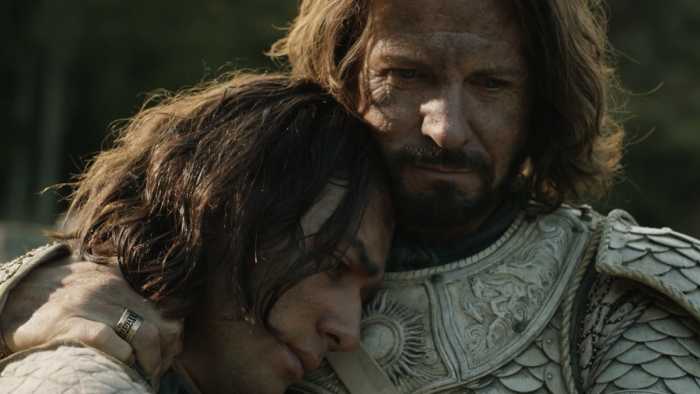
The structure and design of the source material from which the show is drawing its ideas proves to be another challenge. Amazon purchased the rights to the Appendices and other key writing by Tolkien; however, The Silmarillion (the primary text for the first and second ages) was not included in Amazon’s deal. Adapting material from the Appendices and other works provides interesting obstacles for the creative team at Amazon Studios. In the article “‘The Rings of Power’: Every Adaptation is Re-interpretation so Ignore the Haters”, Anna Smol points out that the Appendices serve as an outline of “what happened in Middle-earth before the events chronicled in The Lord of the Rings.” While The Appendices provide a clear timeline of events for the writers to follow, the text is woefully lacking about the details required to create a successful film or television adaption.
The nature of the Appendices as something akin to a historical record has required Amazon Studios to make a variety of difficult choices about the characters and the ways in which these characters interact and the emotions that they express. For example, the dynamics between father and son duo Elendil and Isildur in the Appendices is not as clearly defined as the relationship between characters like Bilbo and Frodo in The Lord of the Rings. In order to make the Rings of Power function as an hour-long drama, the writers, showrunners, and actors had to create their own interpretations of the characters, without a strong reference guide like the books that Peter Jackson had for The Hobbit and The Lord of the Rings trilogies.
These types of complex writing challenges are littered across Rings of Power, and the creative liberty that Amazon Studios must take with existing characters provides a lot of opportunity there to be a clash between their version of characters and fans’ long-held interpretations of characters.
The Struggle to Embrace Devoted Fans and to Still Welcome Newcomers
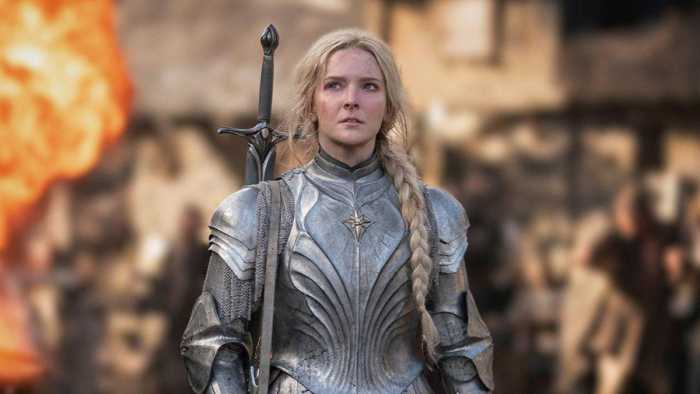
One of the biggest challenges that shows like Rings of Power and HBO’s Games of Throne: House of the Dragon face is making shows that can appeal to both die-hard fans and newcomers. Given the high cost of production for both shows, it is essential that they appeals to the widest possible audience while also pleasing longtime fans. In order to develop its audience, Rings of Power and House of the Dragon have to be very careful about how they structure their narratives and how they inform the audience about their worlds’ histories. The need to satisfy both hardcore and casual fans clearly informs some of the difficult narrative choices that the team at Amazon Studios made with Rings of Power.
For example, the opening episode of Rings of Powers includes an introductory sequence and voice-over that briefly discusses the events of the First Age and sets the stage for Galadriel’s quest for vengeance. This crash course is a necessary expositional sequence that orientates the viewer, and this sequence gives viewers background on a version of Middle-earth that is different from the one depicted in The Hobbit or The Lord of the Rings trilogies. Furthermore, Rings of Power spends its first two episodes introducing the audience to key characters that are scattered across Middle-earth. Establishing all of these different storylines slows down the first few episodes, but it ensures that all viewers will have the required information about characters and the world to understand the different storylines as the develop.
Part II: Joys and Successes of Rings of Power
Creating a Rich and Impressive World
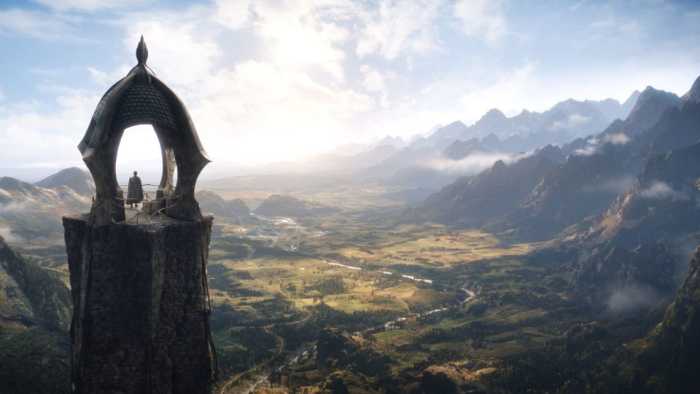
The scope and scale of Rings of Power is one of the show’s strongest selling points. In April of 2021, before the show was released, Hollywood Reporter (using information from New Zealand’s minister for economic development and tourism) suggest the total price tag of the first Season of Rings of Power could be as high as $465 million. This is an astronomical cost for a season of television or streaming show, but the results of that investment are also visible on screen. The Lord of the Rings: The Rings of Power is one of the most visually striking television shows ever produced. Set across several regions of Middle-earth, the first season captures the grand scope of Tolkien’s amazing world. The locations in Rings of Power all feel like they have a long and rich history, and the viewer often has the sensation that they are only seeing a small part of that incredible history.
One of the show’s greatest assets in constructing the epic world of Middle-earth are the natural wonders of New Zealand, which also provided some of the visual spectacles that made Peter Jackson’s The Lord of the Rings films so iconic. In “Where is ‘Lord of the Rings: The Rings of Power’ filmed?” from Yahoo.com, Portia Jones notes that around “a third of the multi-million-dollar series was shot on location, across 38 spots in New Zealand’s North and South Islands”. The show takes advantage of New Zealand’s lush natural beauty with shots of idyllic fields, towering mountains, and beautiful coastlines. The decision to film in New Zealand also creates a powerful link to Peter Jackson’s two film trilogies, while also giving the show a rich natural canvas to develop its world around.
Season 2 of Rings of Power was filmed in the United Kingdom instead of New Zealand, which was a disappointing revelation for many fans. It is unclear how this move will affect the show’s visual identity. The iconography of Tolkien’s world has become deeply interconnected with New Zealand, and it is sad to see Rings of Power leave the area. Hopefully, the show can return to New Zealand at some point in the future.
An Incredible Score Worthy of Tolkien’s Universe
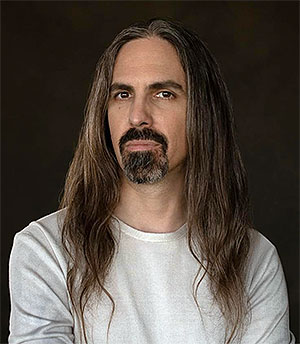
One of the biggest highlights of Rings of Power is its musical score by Bear McCreary. Following up Howard Shore’s iconic work on The Lord of the Rings and The Hobbit trilogies is a difficult task, but Bear McCreary creates an impressive score for the first season of Rings of Power. Due to the restrictions of Amazon’s rights deal, McCreary was unable to reuse any music from the two previous trilogies, which might have been a blessing in disguise. Freed from the expectations of using music from past films, McCreary developed more than a dozen themes for the different characters and civilizations seen in Season 1 of Rings of Power (though The composer Howard Shore did return to write the show’s Main Title Theme). Discussing the Rings of Power score for IndieWire, Sarah Shachat praises McCreary for using “varied instrumental choices from cultures around the world to differentiate all the places the show goes and to provide a sense of how the characters fit within them.” When audiences listen to McCreary work for Rings of Power, it is easy to identify which characters and locations that the different songs connect to.
In addition to the main score, there are several prominent use of lyrical songs in the show. “Wandering Day,” which plays over a montage of the Harfoots traveling the countryside is a tribute to poems and song present in Tolkien’s written work, and the beautiful tune connects the early Harfoots to Third Age Hobbits like Bilbo and Frodo Baggins. In a Collider article discussing the Harfoot song, Julio Bardini asserts that poems and song are a “constant feature in these [Tolkien’s] stories.” One of the biggest musical surprises is dropped in the end credits for season finale where a musical version of the iconic Ring poem from The Lord of the Rings. Utilizing the voice of the incomparable Fiona Apple, the song “Where The Shadows Lie” serves as a haunting conclusion to Season One, reminding fans of where the story of Rings of Power is ultimately heading.
Showing Locations and Cultures that Fans Never Expected to See
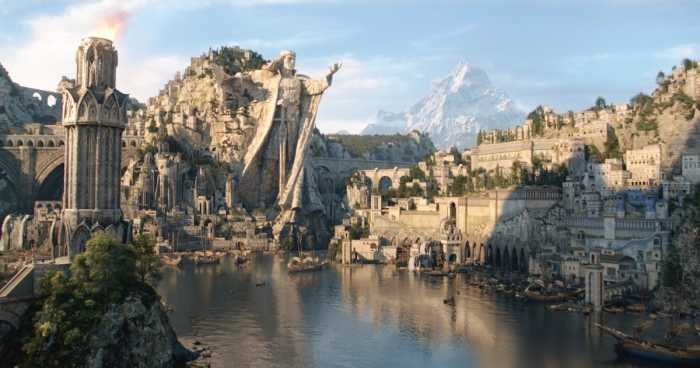
Setting the show in the Second Age of Middle-earth gave Amazon Studios the ability to explore some key places in Tolkien lore that fans have always fantasized about seeing on film and television. Whether it was the Elven Kingdom of Lindon, the grand island of Númenor, or the boundless wonders of Khazad-dûm, the show delights in exploring the grand majesty of the Second Age. Not only does the show have the advantage of using the lush natural beauty of New Zealand, but the show also boasts incredible visual effects that are used to flesh out the world. Much like The Lord of the Rings films, The Rings of Power ushers viewers into a richly designed fantasy world that feels in line with the spirit of Tolkien’s work.
The Conversation about The Rings of Power is About to be Reignited
From its announcement to its release, Rings of Power has faced a variety of challenges. In light of the tremendous challenges that it faced at almost every level of development, the end result was commendable. While clearly flawed in many ways, the first season of Rings of Power was ultimately an impressive foundation from which Amazon Studios can build off of. Adapting the work of Tolkien has never been easy, and it will be interesting to see how the perception of Rings of Power changes as it continues in future seasons.
Season 2 of Rings of Power, which premieres on August 29th, will be an interesting litmus test for the series and how viewers feel about the show. The teaser trailer for Season 2 (posted above) hinted at a sprawling season that will continue the journey of the diverse cast of heroes and villains from across Middle-earth. The season could potentially showcase key lore events like the fall of Númenor, the release of the Balrog on Khazad-dûm, the forging of the One Ring, and the destruction of Elvish Kingdom of Eregion. Regardless of what is shown, it will be fascinating watching fans and critics react to Season 2 of Rings of Power. Additionally, the revelation that Tom Bombadil will appear in the second season of Rings of Power gives Tolkien fans another reason to pay careful attention to the upcoming season.
What do you think? Leave a comment.
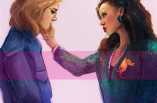
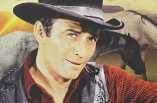
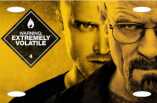
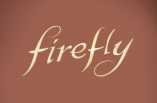
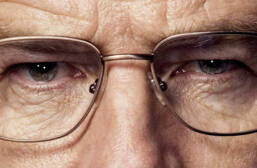
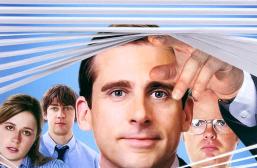
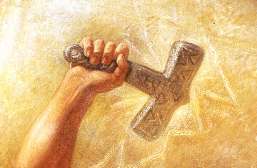
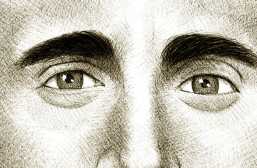
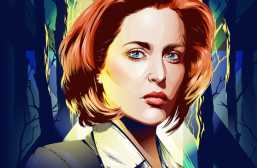
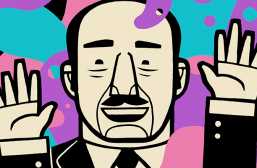
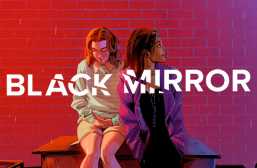
Biased article clearly…what about the Haradrim..wasn’t that natural place to introduce diversity?! It would be situation where the corporates would have cake and eat it too…they would get their damned diversity checkboxes…while maintaining fidelity to lore!!! Hell the Haradrim in the Second Age would allow to explore Tolkien’s world complexity to new levels…depicting other cultures and ethnicities within this world..that of course is modelled on real world….African dark skinned cultures obviously…but the show goes for the typical race swap the white guys and call it a day…just because.
As for the music….I don’t get the praise…the score is rather generic….maybe it’s just my own musical taste….and so on….still this article seems disingenous…another attempt of defending the show while trying to appear as impartial analysis.
Great to see this live! Good examination of how adaptations can work with different source materials than what people expect, and how choices in direction of the adaptation can change the perception of that source material. Looking forward to what you write next!
The Rings of Power was an alternative telling of the second age and not really Tolkien. Every adaptation to film involves changes but the show-runners gaslit the audience that this was a faithful adaptation. The actors were good but the writing was really terrible. They can only do so much with that. Editing was bad with secondary plot lines occurring off screen. Scenes were missing and obviously cut. Just very arrogant and typical of the worst approach to established franchises. Some nonsensical events such as the pyroclastic flow not killing the heroes outright or just dumb things such as the tiny ships storing hundreds of horses or fast travel moving months in days. It was just silly and felt like it was a show struggling with a tight budget but it had a billion dollars!
I actually didn’t think it was that bad. To be fair, there were quite a few unnecessary missteps (the mithril / elves fading suddenly plot line???? Get away…..). Haldebrand wasn’t a very convincing fair form Sauron too (he should have looked fairer but seemed fouler, to quite Mr F Baggins). But it was beautifully shot, and and some of the references to the Silmarillion I did enjoy (though they trashed a bit of that too unnecessarily). I’ll still watch the second series.
I can´t say it was fantastic but I enjoyed watching and it got better during the final episodes. The LOTR was not much better in my opinion and the ridiculously extended version of the Hobbit definitely not better. I look forward to the next season.
Very much enjoyed most of the show; given the slow burn leading up to the battle in episode six and the aftermath of that battle in episode seven, I was taken aback by how rushed the final episode felt.
It feels as if it would have worked better had the events of the eight episode been spread out over two episodes to give the forging of the three rings a bit more time and attention.
Let’s come out and say it: better rewatch the LOTR movies and Game of Thrones (not to mention the Star War movies) rather than the inferior “franchise” prequels.
I liked the way Elrond pronounced “Gah-laad-ree-ell” and “Kell-eh-brim-bohr”.
I liked the song at the end.
I liked The Stranger.
If I never have to hear anyone shout at the TV about lady dwarf beards again in my life, I will be very happy.
Who would have thought that this would be the result of handing the whole thing over to two novices without a worthwhile writing credit to their name?
The only thing that comes close to it in terms of recent works of sheer ineptitude is Rise of Skywalker.
Yup it was bad. I watched all of it telling myself “maybe it will get better” but it didn’t. Won’t be watching season 2.
I thought it was brilliant.
One of the most disappointing things about this show how is how it uses racist Irish tropes. The Harfoots are given irish accents and completely mirror the 19th century propaganda used to justify genocide. This propaganda portrayed irish as a simple sub human species of primitive innocents with straws in their hair living in filth. This led to the penal laws (an extreme form of apartheid) and food being exported out of their county by the British empire while they starved to death. All the ‘advanced’ races speak with clipped English accents typical of the aristocracy. It’s the most clueless colonialist insensitive handling. The Irish population was 7 million 200 years ago but at the time of independence from the old British empire was reduced to 2 million. It’s now 5 mill but by normal pop growth standards should be 25-30 million. Thats what we lost. Amazon just thought who cares about tragedy and let’s just be grossly insensitive.
Loved it. Can’t wait for season 2 and beyond.
I really enjoyed it. It touched the magic of Tolkien. All the criticism from the critics is a bit obvious really.
To be honest I enjoyed it – possibly from the starting point of never having had much interest in LoTR or any of its associated writings. When the Peter Jackson films were released I tried to engage with them but found them slow and essentially boring affairs. If not a committed LoTR fan then the films made you feel there was an air of a secret club who were holding back on some piece of detail – if you didn’t worship LoTR literature then you shouldn’t/couldn’t enjoy them. The Rings of Power didn’t have this feel and was a great bit of escapism each week – roll on the next season.
We didn’t make it past the first episode. It just didn’t feel like anything worth spending time on. Probably would have watched it in lockdown when we’d run out of other stuff to watch.
I think LotR was better in one aspect, that there were people to care about. There isn’t a single character in HotD that I don’t wish for a dragony fire death.
Been a Tolkien fan since 1985, when I, a five year old, was shown The Hobbit TV film. Hooked for life. After an education in literature, Tolkien remains, in my opinion, the great author in the Western Canon. Loved the Jackson LotR trilogy, too, despite a few minor flaws, but overall executed as best any adaptation could.
Overall, The Rings of Power is a good show for Tolkien fans.
1) The script is BAD. Mystery box tropes are cheap and unnecessary, and water down a majestic story. These were failures of the source material. Tolkien wrote (with broad strokes) the stories of Sauron, Gandalf, and all the major players. Amazon had to but merely adapt what Tolkien wrote, and add finer detail if needed. Amazon is OVERWRITING J.R.R. Tolkien’s story instead of adapting, and that is where they are failing. They need to stop, full stop, with that crap and be smarter about how they adapt the writings of such a revered author.
2) The score is unmemorable. I’m disappointed with the lack of leitmotifs and powerful, confident melodies that Middle Earth on screen is know for. Even the scores of the old 70s Rankin-Bass specials stood out more than this drivel. Better to leave any impression than to leave none at all.
3) The show IS struggling to figure out if they are writing for the Tolkien movie or the hardcore book fans. It’s failing everyone in that regard.
4) I think the acting has been good, if not great. The Numenorean characters act as if they were given no direction or motive for their characters. The southlanders as well. Morffyd Clark was excellent, as was most of the cast of Eregion. But they need to do much, much better as a whole.
For the most expensive show ever made, we should not be having these conversations. This should have been a home run. Instead it’s more of a base hit.
While damage has been done, especially script wise, I do not give up hope. They can salvage this show and make it great. They only need to try harder.
Bear McReary appears to have recycled some of his Walking Dead score for the final episode.
So maybe I wasn’t the only one experiencing nausea at Bear McCreary’s music, sad though it is to say. He’s done many a good thing (not least the original theme the Outlander, which I felt worked well), but not this. Musical desperation, in the face of a narrative vacuum. I did quite like the arrival of Gandalf, though, delivered a bit like an Amazon parcel chucked over the hedge…
I read enough varying quality Tolkien fan faction in the early days of the internet to have no interest in this series. When it started, I sat down and started to read the Silmarillion again and really enjoyed it. That’s the thing about books, you get better images.
Someone on the financial side of the television industry reminded me that Amazon isn’t a television company. It’s a mail order business that dabbles in TV to boost its cred.
This is why HBO will always produce superior shows. Bezos should stick to home deliveries since that is his business model. Amazon already botched Wheel of Time.
I absolutely enjoyed it! Give it a go. Now I can’t wait for season 2.
Maybe it’s because most of today’s film/television writers have absolutely nothing in common with JRR Tolkien (a professor of medieval history and literature who was a devout Roman Catholic writing just before, during and after WW2). It’s difficult to see how they can add much to his work when they probably don’t even fully understand it.
“Understanding it” is a relative idea that changes through time.
Loved the show, thought it was very Tolkien. Enjoyed all of it thoroughly.
One of the things I’m looking forward to in Season Two is the absence of the haters and trolls, because of course as they hate the show sow much they wouldn’t possibly sit through any more…. LOL no of course, I’m joking, these people are on a mission. But clearly there are sufficient of us that are unmoved by this manufactured opprobrium for the show. Sure, the earlier episodes were too slow, there is certainly a pacing issue, but that’s often a season one issue in shows when they need to familiarise viewers with the world and the people in it. It’s certainly better than the claustrophobic family feud soap opera that is House Of The Dragons.
Of course we are on a mission :)…don’t you know…we like to burn heretics. 🙂
I enjoyed it. It lacked menace and danger though.
I stopped watching it after episode 4. It was ok, I can’t say the acting was any worse than alot I’ve watched recently and visually it was quite nice. My major problem is that half of the scenes were unnecessary and the plot moved too slowly. You don’t really care about who Sauron is. Eventually he’s going to appear, forge some rings and there’s going to be some nice visually pleasing battles. We don’t need a back story to everything before that happens or every bit of middle earth folklore squeezed out of a dirty loin cloth onto a green screen, just the important parts that move the plot forward. Peter Jackson understood that in the Lord of The Rings trilogy. Personally it would have been better to have 6 episodes concentrating on each sub plot and have them combined in the last two. It worked well with The Whitcher.
I was massively looking forward to it both in the context of cutting-edge TV and a lifelong Tolkien nerd.
Was disappointed on both counts. Gave up halfway through episode 6 with a despairing “who writes/approves this nonsense?”
Gutted.
I enjoyed the series. It wasn’t perfect but it wasn’t as bad as the ‘click-for-profits’ YouTube LOTR phony experts claim. Most of the stuff published after Tolkien’s death was a mess; edited and likely added to, contradicted by some of his letters, etc. Amazon only has the rights to a very limited scope, but they did a good job regardless of that limitation.
I loved it, but what do I know? I’m just a humble viewer.
I liked the Nori storyline, though it was a rip-off from Stranger Things. Nori finding a hairy old stranger in the woods who had to learn everything from the scratch was quite charming, but not as charming as the 3 boys finding a hairless girl. And old stranger asking himself: am I good? Are my powers evil? wasn’t as charming as hairless Eleven asking: am I pretty? Did I release the monsters? Am I a monster?
The evil elf as self-declared Spartacus was second best story-line, but didn’t get anywhere yet. Is there a place for Orcs in this world? Will Galadriel touch evil by convincing us that eradication is the only solution, the Endlösung? Heavy questions with no answer on the horizon.
Not brilliant and not disastrous, just moderately entertaining. Good idea to feature Galadriel, finely acted by Clark. Problem was the lack of a driving narrative. It’s a back story, too obviously. Rather syrupy, particularly regarding harfoots, so feels geared for kids rather than adults. Would have liked it darker and more earthy, er middle earthy.
The best bit was when they used the same alleyway set for two fight scenes in Numenor the week after each other in two separate episodes. I mean for a budget this size, thats kind of unfogiveable.
Pfft. Don’t you know that the Great Alleyway of Numenor is mentioned many a time in Tolkien.
It’s basically the Middle-Earth equivalent of the Quadrophenia alley in Brighton.
I’m a lifelong on and off Tolkien reader – from the Hobbit in first school to LoTR at about 12 ish. And also a lot of in depth knowledge from the other books and the role playing material that was around in the 80s/90s and pretty strongly based on the lore.
And actually I don’t care that they changed the storylines – to be frank given the very limited material they had to work from (a few pages of history) and things they couldn’t use – I think they had little choice other than to recreate a large part of it. Did it work? Some of it – some was poor and I can’t help thinking a decent fantasy writer could have done better at the plot lines etc or even a good games industry person. One example – the wrapped up sword thing that wasn’t – I’d hope an elf of Galdrield’s age and skills would be able to sense evil in some fashion, or at the very least have looked at it!
The Harfoots are terrible but I guess that’s the perceived need to appeal to a wider audience. Not everyone is a geeky fantasy fan like me 🙂 The elves were okay and should be haughty and superior as the ones seen are mainly Noldor I believe, and the dwarves are as just about every fantasy setting has always portayed them (some of that probably because of Tolkien’s legacy).
I’m unsure about it overall and didn’t love it – but I’ll watch some more.
I watched and admired it for its technical accomplishments which were impressive. But, the writing: one overly-earnest moment of what aspired to be high drama and/or heartwarming charm after another like beads threaded onto a string. Almost a parody of itself.
Proof that you can’t polish a turd, but you can dip in in very expensive glitter.
As a teenager I waded through the books until I got to the last 100 pages then I just gave up. I love the Hobbit it’s a great kids story, but Tolkiens ambitions for Middle Earth of the trilogy sort of loses a lot of The Hobbits charm. I watched the Jackson films, they were ok, The Hobbit was aweful. There are bits of LOR that are truly compelling, but overall it doesn’t work for me. Hence I’ll be giving TROP a wide berth. Now Derry Girls on the otherhand….
Got to say I enjoyed it, an hour of entertaining fantasy TV whats not to like, roll on series 2.
Though having never read the books helps I suppose.
Wow those elves were dull. Interminable in more ways than one.
Thoroughly enjoyed it and looking forward to subsequent series.
Great piece. Looking forward to season 2.
Thank you for this great article! I wish more comments were on the topic of this article, about the issue of adaptation — adaptation of literary work for television, a work of the past for a contemporary audience, etc.— and not on how they love or passionately hate the show. 😀
Well, as for me, changes are good; they add newness to old things.
Talking about adaptation of Tolkien’s world, I think there’s a crucial element that is lacking in the Rings of Power series. And that is, a story in the form of an adventure, a journey, a quest. Both the Lord of the Rings and Hobbit are greatly loved mainly because of the adventure. Everything unfolds as part of the protagonists’ encounters in their adventure. The readers also share their experience of the adventure. But that element is missing in the story of the new TV adaptations.
I really loved the depth you brought to this article! I’m a huge fan of The Lord of the Rings film adaptations, but The Hobbit didn’t quite do it for me, so I wasn’t really curious about The Rings of Power. But after reading this, I’m actually tempted to catch up on it! The way you highlighted the challenges of adaptation and all the layers involved really piqued my interest. Guess I’ll be diving back into Middle-earth sooner than I thought! 😊